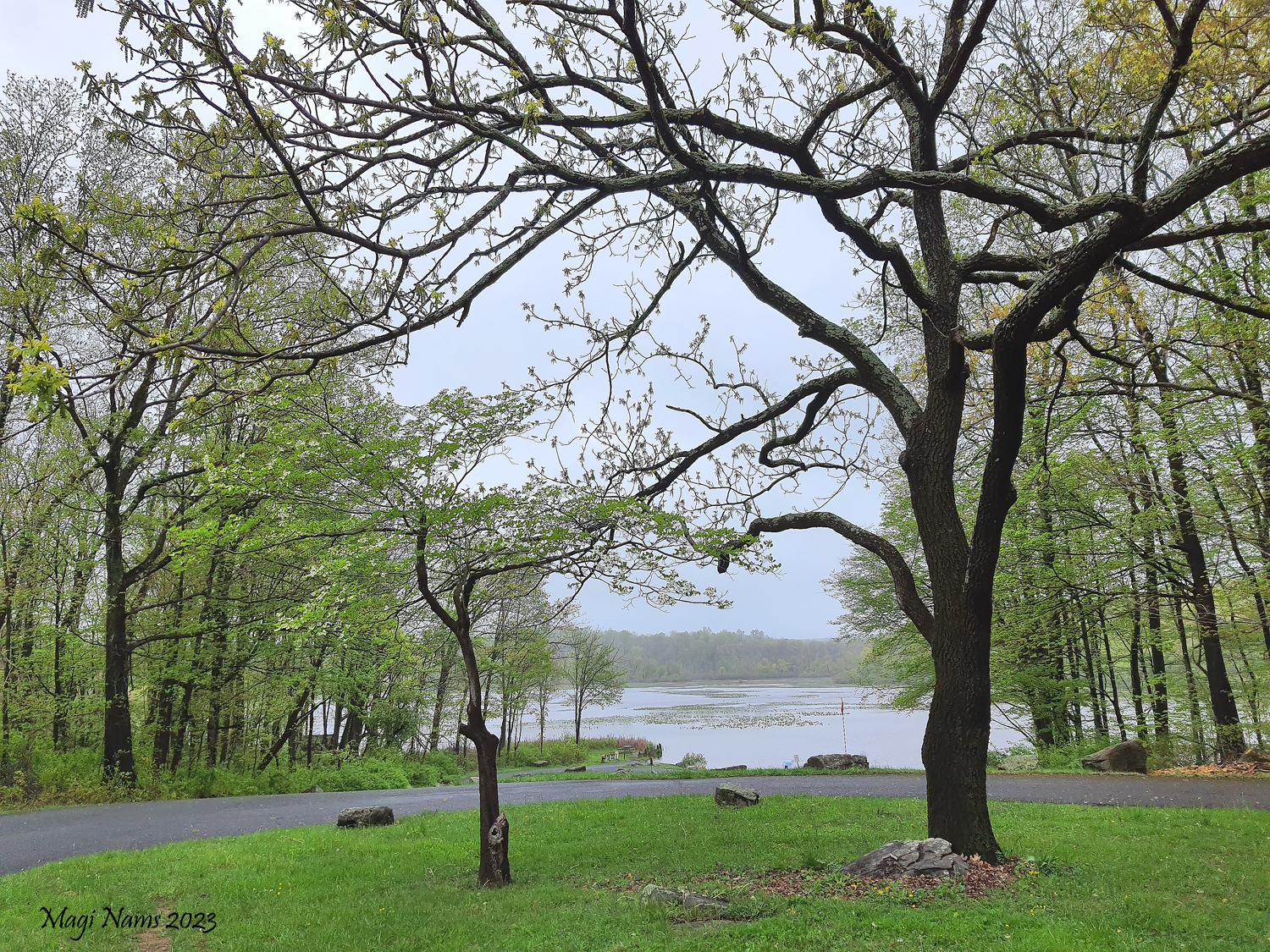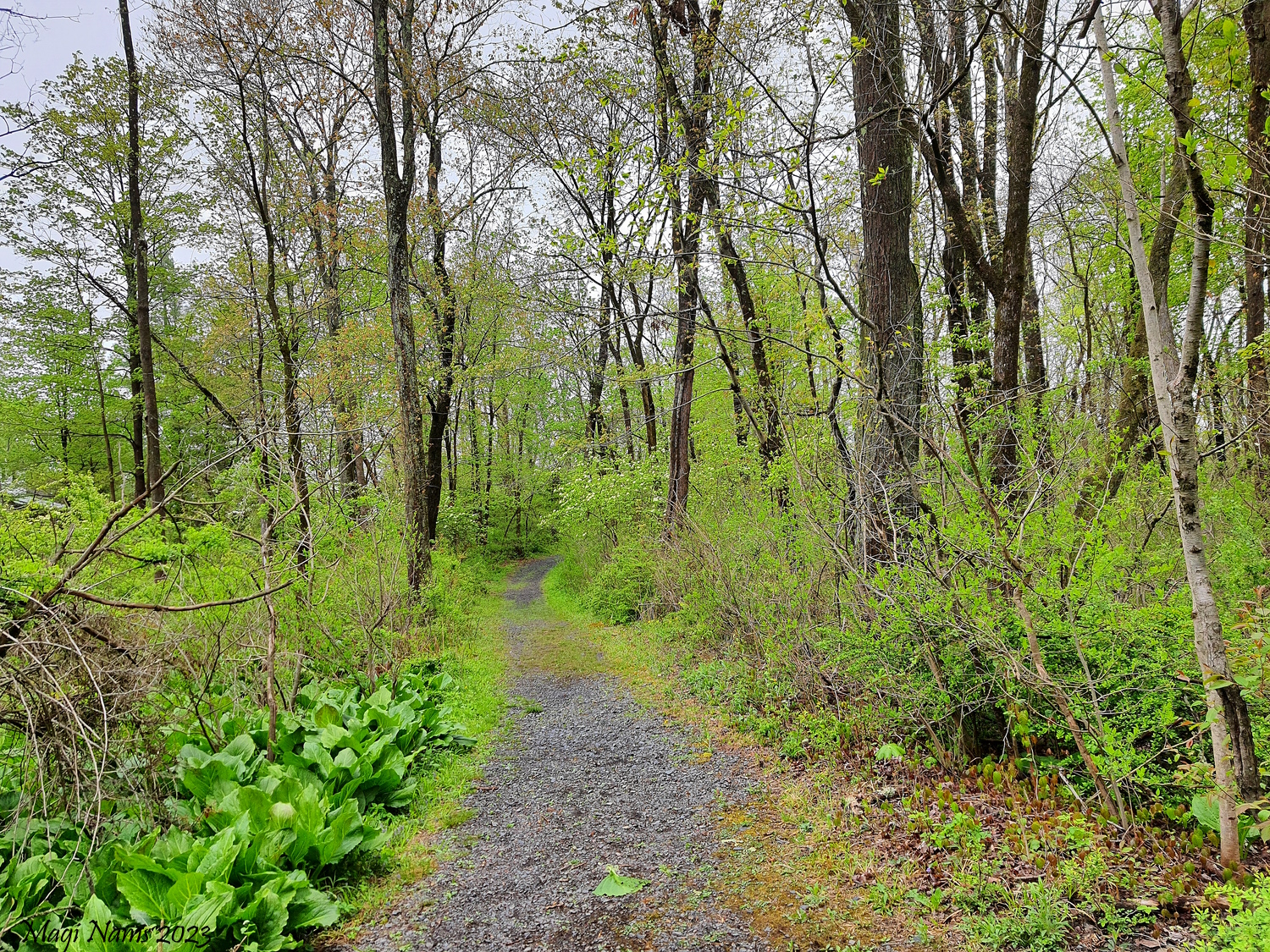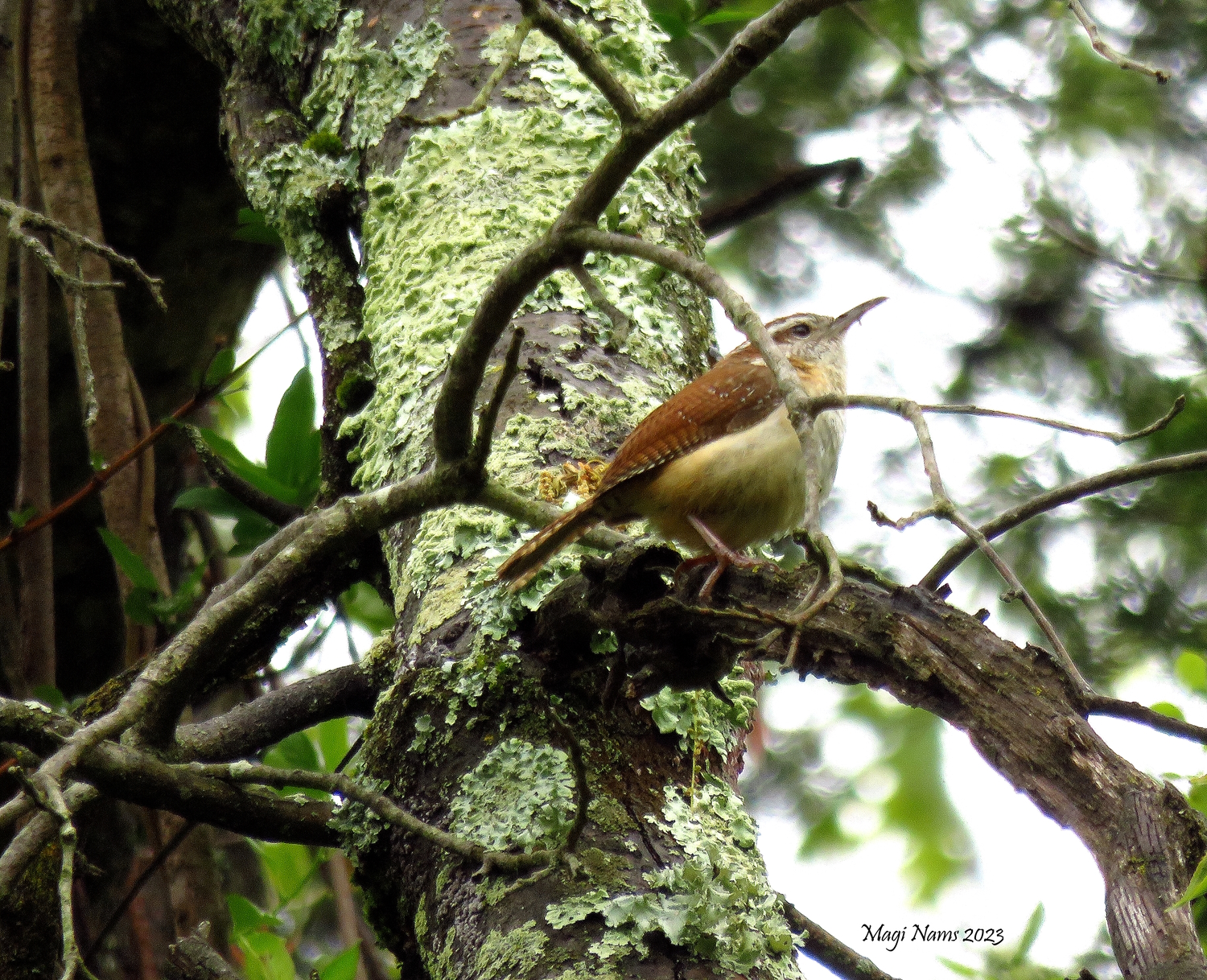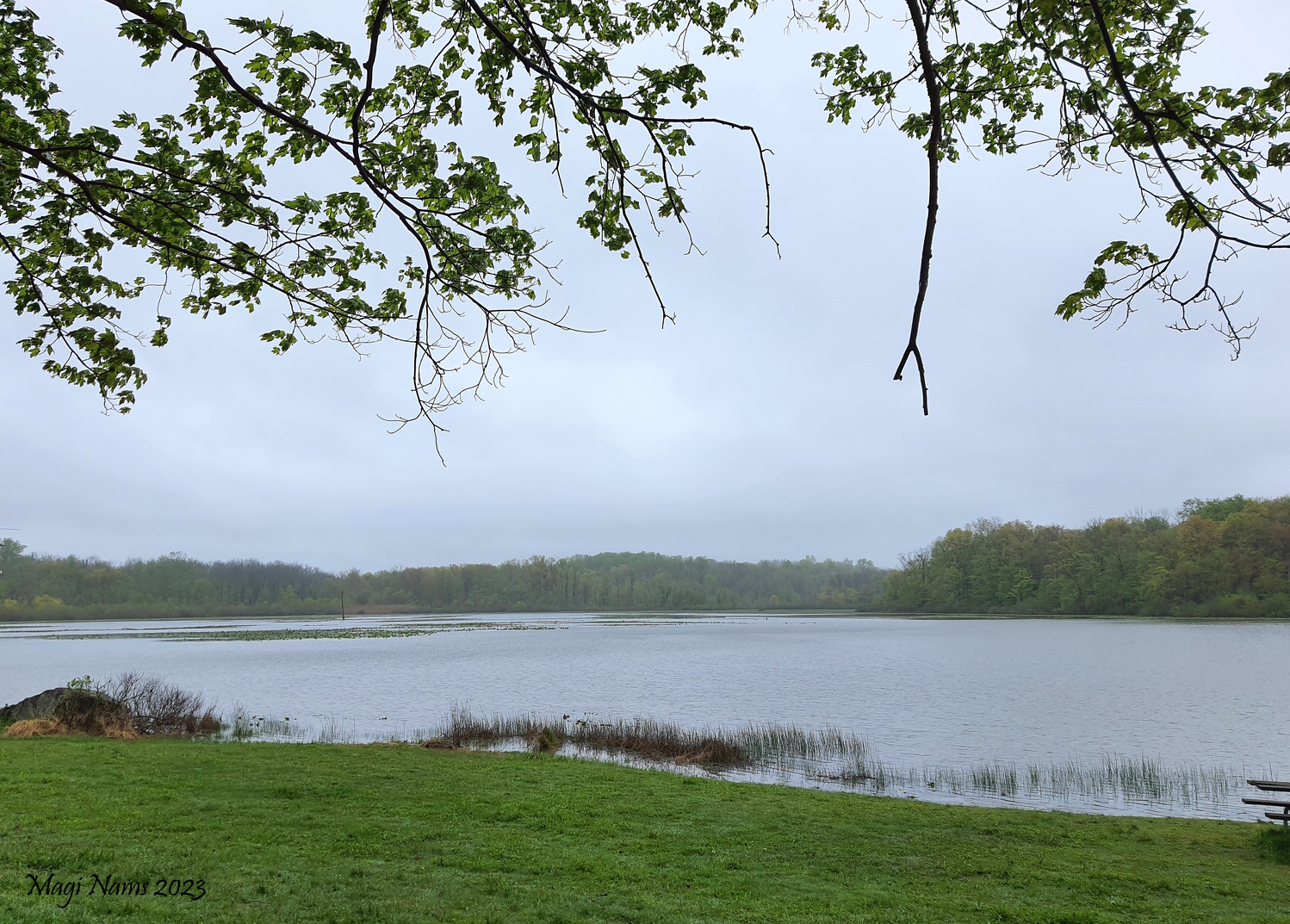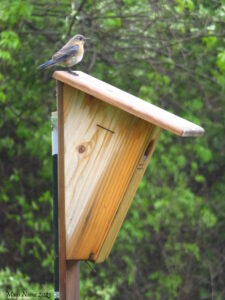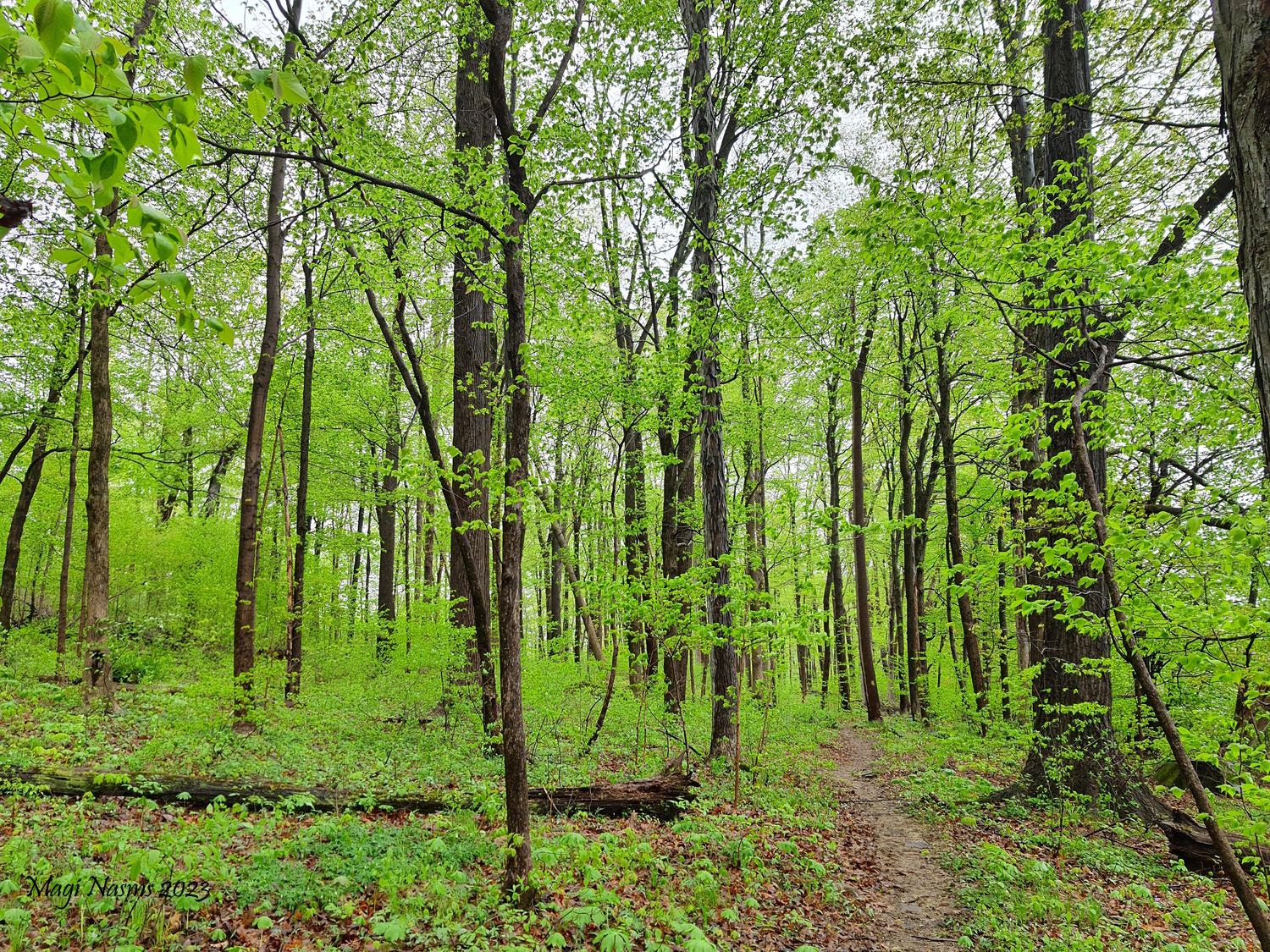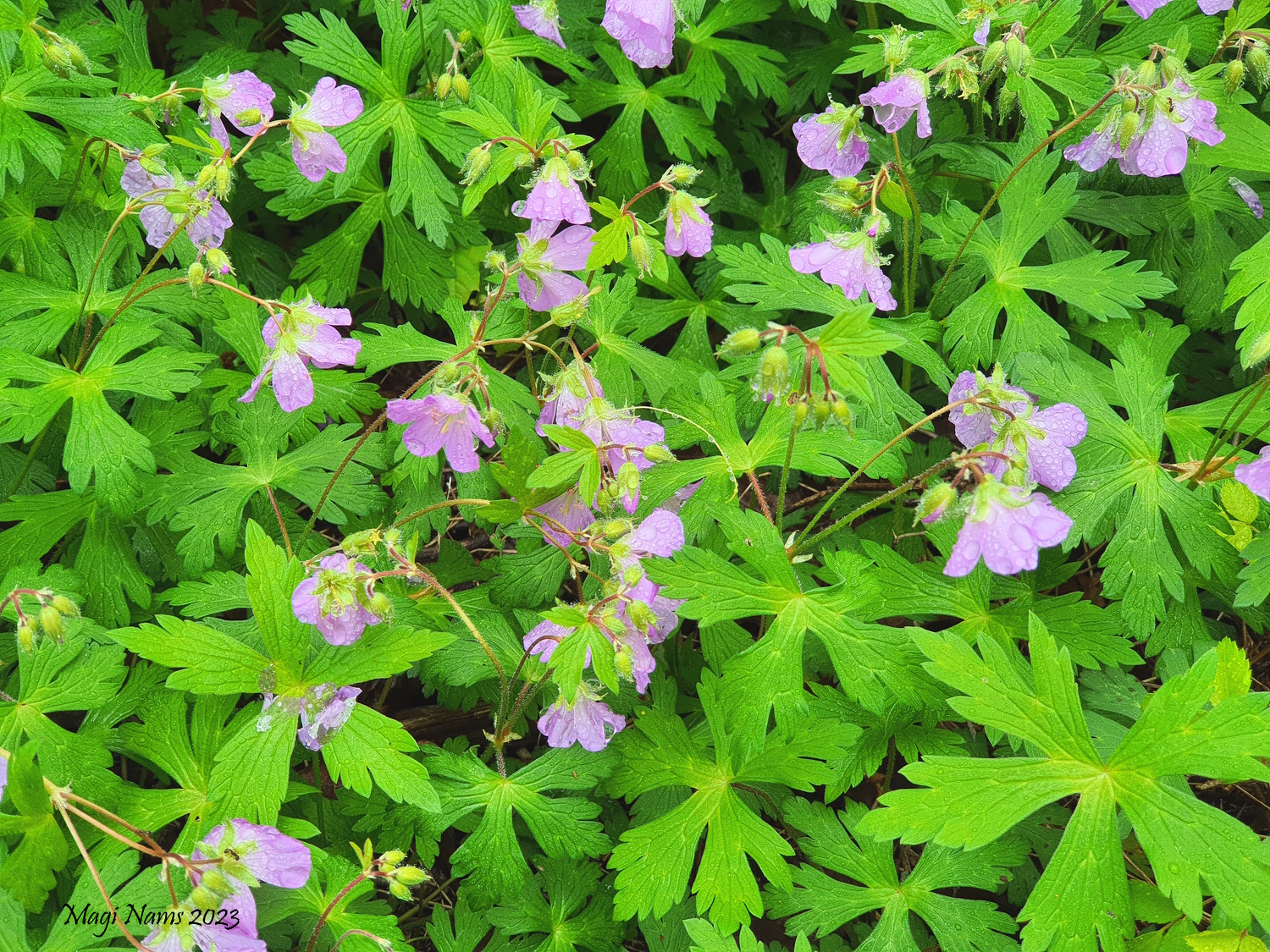Easy trails, lush woodland, and an accessible lake offer excellent birding in eastern Pennsylvania.
Lake Towhee County Park is a 222-hectare (549-acre) rural park abutting the quiet village of Applebachsville, Pennsylvania. Located about 9 kilometres (5.7 miles) northeast of Quakertown in Bucks County, the park is largely forested and encloses 20-hectare (50-acre) Lake Towhee. The main entrance to the park is at 800 Old Bethlehem Road. The main trail in the park, Yellow Trail, can also be accessed from Apple Road which intersects with Old Bethlehem Road north of the main park entrance. To view a park map, click here. This park is a multi-use park with walking trails, a playground, restrooms, campgrounds, a fishing pier, a ball field, and a boat ramp.
Cool, wet spring birding
On Saturday, April 29, 2023, I spent a cool, wet afternoon birding in the park while my husband Vilis (along with other singers) rehearsed for Dziesmu Diena, an annual concert of Latvian sacred music, held this year at Bucks County Latvian Baptist Church in Applebachsville. Leaving Vilis at the church, I birded my way along Apple Road, crossed Old Bethlehem Road, and soon found the entrance to the park’s Yellow Trail on my right, off Apple Road.
Stepping onto the trail, I found myself surrounded by rich spring growth, with the greens of groundcover plants and unfurling shrub and tree leaves almost shockingly vivid. Fortunately for me, hardwood trees edging Yellow Trail had only begun leafing out, so I was able to get some good high views of birds.
Exciting and familiar finds on Yellow Trail
My most exciting early sighting was of two Red-bellied Woodpeckers working their way through the canopies of trees. The woodpeckers’ red napes almost glowed like embers against the wet sky as their harsh, rolling “kwirr” calls rang out in the forest.
Although I don’t see red-bellies around my home in northern Nova Scotia, many other birds I spotted or heard on Yellow Trail were old friends I routinely encounter at home. Blue Jays squawked and winged through the woods like patches of cerulean satin. Handsome White-throated Sparrows belted out their “Oh, sweet Canada-Canada-Canada” songs. Graceful Mourning Doves flushed from the forest floor, their wings whipping the air into a characteristic pulsating whistle. Common Grackles rasped out their throaty notes and “rusty-hinge” songs. American Robins seemed to be everywhere, their orange breasts blazing, their “cheerio-cheeriup-cheerio” songs ringing out over the forest.
Spring wasn’t as far advanced as I (hailing from the Great White North) had expected, a fact that was echoed in the low number of wood warblers I recorded: only one each of Ovenbird and Black-throated Green Warbler. I had hoped to see and hear a much greater diversity. Nonetheless, House Wrens, Carolina Wrens, Northern Cardinals, and American Goldfinches filled the woods with music, and other species made an appearance in low numbers. [Click here for my complete eBird list for the park.]
Lake and lakeside birds
I walked south on Yellow Trail for about 300 metres (325 yards), as far as the park’s group camping area (occupied by a troop of slightly sodden-looking Boy Scouts and their leaders), and then across the northern edge of the campground to the lake.
Mist hung over the water, and drizzle blurred visibility, but I spotted birds on and over the lake. Barn Swallows and Tree Swallows glided over the surface, picking off insects. A Double-crested Cormorant surveyed the water from its perch on a log protruding from the water. On the lake’s far side, a Mute Swan swam back and forth, dipping its orange bill into the water. A Great Blue Heron stood motionless among reeds near the far shore. I spotted or heard a dozen Red-winged Blackbirds, some perched in lakeside trees.
A small hide adjacent to the lake was rather flooded, so I only spent a few minutes in it before following a narrow trail south along the lake shore, almost to the lake’s tip. Several bluebird boxes on poles were set along the shore, and I spotted a female Eastern Bluebird at one of the boxes.
Second sighting and two lifers
I checked out the parking and camping areas near the south end of the lake, and then followed a narrow woods trail north to the group camping area where I again linked up with Yellow Trail.
Despite the rain and my soaked feet, I was thrilled to spot three Blue-gray Gnatcatchers near the parking area. They flitted from branch to branch, sputtering their nasal calls. This was a species I’d only seen once before (and a poor sighting that was) at Point Pelee National Park in southern Ontario.
Even more exciting, I recorded two lifers (species never seen before). The first was the Tufted Titmouse, a shades-of-grey chickadee cousin with a tidy grey crest. The two titmice I observed were every bit as perky and energetic as the Black-capped Chickadees I see at home in Nova Scotia.
My second lifer was a Carolina Chickadee. I heard a voice I didn’t recognize, so I used the Cornell Lab of Ornithology’s Merlin app to give me an idea of what I might be hearing. The app indicated that the mystery voice, a double repetition of a high note followed by a lower note, was that of a Carolina Chickadee.
A Carolina Chickadee looks virtually identical to a Black-capped Chickadee. The two species can be reliably told apart only by their songs. Thus, the only way I could confirm my mystery bird’s identity (since I wasn’t sure if black-caps occurred in the area) was to see the bird in question and hear it singing. I briefly played a recording of a Carolina Chickadee song, and—lo and behold!—a chickadee landed in a tree right in front of me. This bird looked identical to a Black-capped Chickadee, but the song it sang was the song I’d played to lure it to me. Bingo! One Carolina Chickadee.
As I followed Yellow Trail back to Apple Road, I also recorded sightings of a Downy Woodpecker and Pileated Woodpecker and heard the high-pitched ascending whistle of a Broad-winged Hawk soaring overhead. I took time to enjoy the woodlands around me, reveling in spring wildflowers such as Wood Geranium, Garlic Mustard, and what might have been a white version of Spanish bluebells.
By the time I returned to the church, with rain dripping from my jacket and rain pants, and with sodden sneakers and socks, I had recorded, in just under three hours of birding that covered 4.7 kilometres (2.9 miles), a respectable total of 30 bird species, with 105 individuals. Had it been a sunny day later in the breeding season, I’m confident that I would have seen and heard more.
This excursion confirmed to me that no matter where I am or what the weather is (except, of course, in extremes), I will see or hear birds. Sometimes, not many; sometimes, an abundance. It’s always worth stepping outdoors to take a look.
Well done, Lake Towhee County Park!


